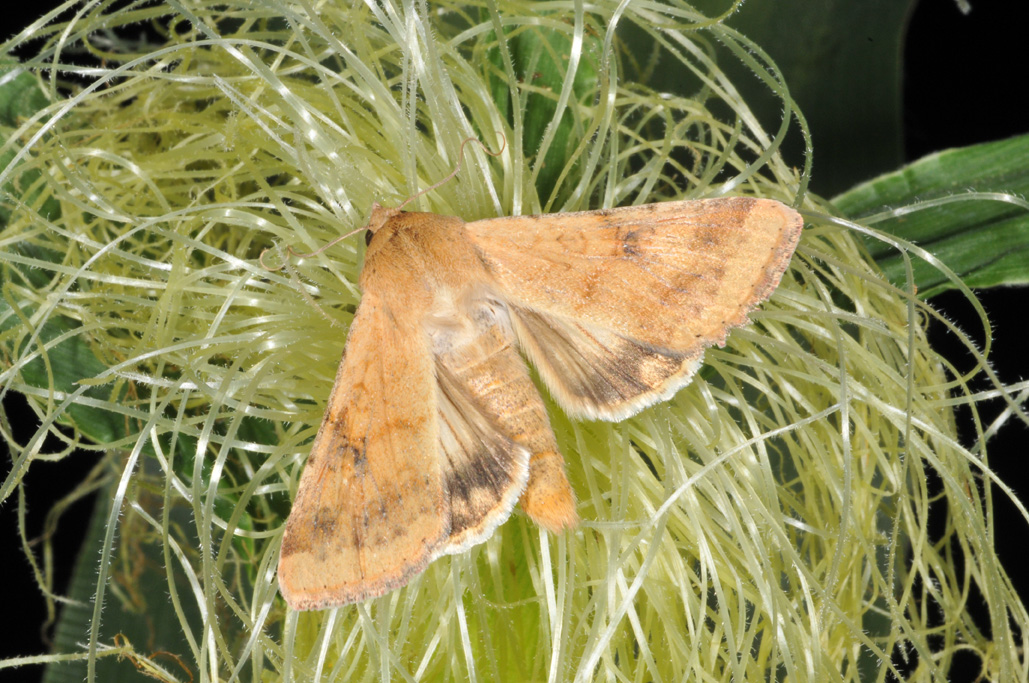We have begun our state-wide trapping and monitoring program for corn earworm (Figure 1). The latest trap catch information can be found here. Traps have been placed at each of the eight Purdue Agricultural Centers throughout the state. Trap catches at the reporting farms are already in the double digits. Please refer to E-31 to learn more about corn earworm identification and management.
Management and insecticide sprays target the eggs that are laid, preferably on fresh corn silk. If no field corn in the area is silking, which is true for most this year, use a threshold of 1-3 moths per night per pheromone trap. You only need to spray your sweet corn if it has silk present. When field corn begins to silk and green silk is present the threshold increases to 10 moths per night. Eggs are laid individually on developing silk. They hatch within 2-5 days and the larvae follow the silk channel down into the developing ear to feed. Once inside the ear, there is no effective control. Therefore, monitoring and spray coverage are key. You want the hatching larvae to experience a lethal dose. See ID-56 for a complete list of spray recommendations, but briefly for organic production Entrust® is the only product available that provides good control. For conventional commercial growers we recommend Coragen® and Radiant®.
